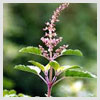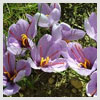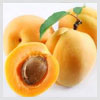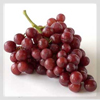Home Remedies for Fever
Fever is one of the inherent ways by which your body fights an infection. The body's intent in raising temperature is to create a more difficult and hostile environment for the invading bugs. Therefore, fever, up to a certain degree, is beneficial and could slow cold-virus proliferation. We recommend you do not treat a mild fever right away.
However, physiologically, fever represents a disturbance in normal thermo-regulation. The disturbance is demonstrated with an upward shift of the body's core temperature from its normal set point (37 degree Celsius or 98.6 degrees Fahrenheit or lower) to one or more degrees higher. Fever is considered a naturally occurring physiological event in which the body actively seeks to elevate its temperature.
The home remedies for fever mentioned below are ones that can be put to use only when fever is a result of viral infection, exhaustion or because of some other ailments like chicken pox, malaria etc.
Natural remedies for fever
Tulsi (Indian basil) as a home remedy for fever
 Properties: Due to its multiple medicinal uses, holy basil occupies an important place in Ayurveda. It is highly useful in diseases of ears, rose throat, gastritis, flatulence, cough, fever, vomiting, heart diseases etc. if four holy basil leaves are ingested on empty stomach early in morning, it will benefit in diabetes, blood deformities, bile, phlegm etc. if juice of holy basil leaves and lemon are mixed and dropped three to four drops in the painful ear, it will subside aural pain. In fact, holy basil cures in almost all the diseases rather it is a panacea. It is an excellent home remedy for fever which was proved by imperial malaria conference in 1907.
Properties: Due to its multiple medicinal uses, holy basil occupies an important place in Ayurveda. It is highly useful in diseases of ears, rose throat, gastritis, flatulence, cough, fever, vomiting, heart diseases etc. if four holy basil leaves are ingested on empty stomach early in morning, it will benefit in diabetes, blood deformities, bile, phlegm etc. if juice of holy basil leaves and lemon are mixed and dropped three to four drops in the painful ear, it will subside aural pain. In fact, holy basil cures in almost all the diseases rather it is a panacea. It is an excellent home remedy for fever which was proved by imperial malaria conference in 1907.
Home remedies for fever using tulsi:
Grind 11 leaves of tulsi, 9 black pepper seeds, 30gm of ajwain and 50 gm. of stone ginger in a mortar, and shakes well with water. Take a newly prepared dry clay cup or crucible, heat it strongly, and pour the above mixture into it. Then expose your body to the vapors emanating from the hot mixture. When its temperature comes down to a tolerable level, add a little rock salt to the mixture and drink it off. Fever of any type will subside in a very short time. If the fever is accompanied by cough and difficulty in breathing, take 3 grams of tulsi juice and 3 grams of ginger juice with a teaspoonful of honey. The fever will subside and phlegm will be removed, making breathing easier.Fenugreek as a home remedy for fever
 Properties: Fenugreek is famous in the Mediterranean and Middle East not only as a human food and medical plant but also as a fodder crop. Fenugreek has been used to cure just about everything under the sun. Here and around the world, the plant is recommended as an expectorant, laxative, febrifuge and stomachic. The herb is employed as a folk cure for diabetes, anemia and rickets. Applied externally, fenugreek poultices have been said to soother boils, wounds and ulcers. The herb was primary ingredient of the popular Lydia Pinkham´s health tonic. Research suggests that at least some of these old time remedies have merit. The seeds contain up to 30 percent mucilage, which does indeed make them a good poultice.
Properties: Fenugreek is famous in the Mediterranean and Middle East not only as a human food and medical plant but also as a fodder crop. Fenugreek has been used to cure just about everything under the sun. Here and around the world, the plant is recommended as an expectorant, laxative, febrifuge and stomachic. The herb is employed as a folk cure for diabetes, anemia and rickets. Applied externally, fenugreek poultices have been said to soother boils, wounds and ulcers. The herb was primary ingredient of the popular Lydia Pinkham´s health tonic. Research suggests that at least some of these old time remedies have merit. The seeds contain up to 30 percent mucilage, which does indeed make them a good poultice.
Home remedies for fever using Fenugreek:
fenugreek is available in tablet, topical tea, or tincture formulations. Currently fenugreek supplements are standardized based on four hydroxyisoleucine concentration. Recommended dosages are based on studies assessing the efficacy of fenugreek in reducing blood glucose levels and range from 2.5g twice daily to five to seven gram taken with each meal. For hypercholesterolemia, doses of 0.6 to 2.5 gram twice per day have been reported.Saffron as a home remedy for fever
 Properties: In traditional medication saffron has several properties such as relaxant, expectorant, exhilarating agent, digestion stimulant, spasm calmative, menstruation and fetus abortion. Saffron was also used against bloody diarrhea, fever, measles, hepatitis, liver and spleen syrose, urine infections, cholera, diabetes, and dermal diseases. In English pharmaceutical codex saffron syrup, saffron glycerin and saffron tincture are discussed.
Properties: In traditional medication saffron has several properties such as relaxant, expectorant, exhilarating agent, digestion stimulant, spasm calmative, menstruation and fetus abortion. Saffron was also used against bloody diarrhea, fever, measles, hepatitis, liver and spleen syrose, urine infections, cholera, diabetes, and dermal diseases. In English pharmaceutical codex saffron syrup, saffron glycerin and saffron tincture are discussed.
Cure for fever using saffron:
A tea made from saffron is really effective for fever. The tea is done by putting half a teaspoon of saffron in thirty milliliter of boiling water.Natural remedy for fever using raisins
 Properties: Raisins of the sun or dried grapes are in constant repute for fever, coughs and soreness of the lungs, and in consumptions or wasting. Raisin tea is found to be of the same protein value as milk and much more easily digested, therefore of superior use in many cases of gastric disease where milk or soup must be disallowed. For people who suffer from coldness of the feet and hands, it is very warming and cherishing. Raisins are normalizer for both diarrhea and constipation.
Properties: Raisins of the sun or dried grapes are in constant repute for fever, coughs and soreness of the lungs, and in consumptions or wasting. Raisin tea is found to be of the same protein value as milk and much more easily digested, therefore of superior use in many cases of gastric disease where milk or soup must be disallowed. For people who suffer from coldness of the feet and hands, it is very warming and cherishing. Raisins are normalizer for both diarrhea and constipation.
Natural remedy for fever using raisins:
The medicine is made by soaking 25 raisins in ½ a cup of water and then smashing them in the same water. Later it turned to a tonic. Later half spoon of lime juice is mixed to the tonic to enhance its usefulness and taste.Cure for fever using Apricots:
 Properties: The seeds are used in cancer treatment. They contain a chemical, which is believed to be beneficial in controlling cancer. Apricots contain good amounts of potassium, iron and are good sources of vitamin A and are high in natural sugar content. Dried apricots are an excellent source of iron. Apricots also contain cobalt, which is necessary in the treatment of anemic conditions. Dried apricots have six times as much sugar content as the fresh fruit. Therefore persons with diabetes must be careful not to eat too much dried apricots. However, they are good when an energy boost is needed.
Properties: The seeds are used in cancer treatment. They contain a chemical, which is believed to be beneficial in controlling cancer. Apricots contain good amounts of potassium, iron and are good sources of vitamin A and are high in natural sugar content. Dried apricots are an excellent source of iron. Apricots also contain cobalt, which is necessary in the treatment of anemic conditions. Dried apricots have six times as much sugar content as the fresh fruit. Therefore persons with diabetes must be careful not to eat too much dried apricots. However, they are good when an energy boost is needed.
Treatment for fever using apricot:
Steamed apricots are advised to persons suffering from fever as they have a cooling effect.Cure for fever using grape:
 Properties: Herbalists report that grape leaves are anti-inflammatory and astringent and can be takes for fever, diarrhea, heavy menstrual bleeding and as a medicinal douche. Grapes when transformed into raisins, juice or wine, have also found some medicinal value. Other researchers have found grapes to contain antioxidants and be of value to the circulatory system.
Properties: Herbalists report that grape leaves are anti-inflammatory and astringent and can be takes for fever, diarrhea, heavy menstrual bleeding and as a medicinal douche. Grapes when transformed into raisins, juice or wine, have also found some medicinal value. Other researchers have found grapes to contain antioxidants and be of value to the circulatory system.
Cure for fever using grape:
Grape juice extinguishes thirst and takes off the burning sensation generated by the fever. Half glass of this juice should be taken with an equal quantity of water.Diet for fever
Diet should be restricted until the fever drops. Since fever has depleted the body´s energy stores, caloric needs are high and intake should be adjusted accordingly. Additional protein is also needed to replace and rebuild the damaged and used up body tissue and to form new antibodies- substances manufactured by the body to fight infection.
A high fluid intake is necessary to compensate for the loss that occurs with fever. Sodium and potassium are lost when fluid is lost; therefore, their replacement is also necessary when fever occurs.
Lemon and honey in water is a good replacement.
Nutrients may be helpful. The increased energy expenditure that occurs during fever increases metabolism. Because vitamin A, the B complex and vitamin C are involved in the process of metabolism, deficiencies of these nutrients may arise also.
The vitamin B complex especially should be increased during an extended fever, since these vitamins may stimulate the appetite.
Additional calcium may also be required because of its decreased absorption during fever.
Herbs as a diet for fever that may be beneficial are dandelion tea, licorice root, bayberry root bark, black cohosh, lobelia extract, blackthorn, ginger, fenugreek seed, hyssop, blessed thistle, devil´s claw, to fi quinine, poke root, cat mint infusion, Echinacea root, yarrow tea, thyme and seaweed.
| Add your Home Remedy below.. | |

